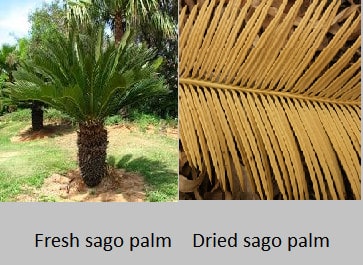The Ultimate Guide for Parents: Preparing Sago Perfectly!
Dear Super Parents,
Welcome to this ultimate guide about one of the most versatile food items around: sago. Through this guide, we’ll navigate the wonderful world of sago together, learning everything you need to know about its preparation. And don’t worry! Even if you’re a beginner, this guide will make the sago preparation process easier than a morning walk in the park! So, buckle up and join us on this delightful culinary journey.
Introduction: It’s All About Sago.
To kickstart this guide, let’s begin with a bit of background on our star ingredient: sago. Sago is a starch taken from the center of sago palm stems. It has been a staple in several countries’ diet due to its remarkable capacity to supply energy – just what your energetic children need! Its mild taste makes it a fantastic ingredient to be added in numerous recipes!
Now let’s dive into the process of preparing sago from scratch, highlighted in simple, easy-to-follow steps.
Step 1: Buying the Perfect Sago
Sago comes in numerous forms, but the most commonly used and easy-to-manage kind are the sago pearls. Yes, they quite look like little pearls! While shopping, remember to buy the sago that is crystal clear – the clearer the sago, the better their quality.
Step 2: Washing the Sago
Preparation begins with a thorough washing process. Place the desired amount of sago in a strainer and wash them under running water. This process helps to remove any residual starch and assures you of clean sago.
Step 3: Soaking the Sago
Post washing, it’s time to soak. By immersing your sago in water for about an hour, you will help them become soft and easy to cook. Ensure the water sufficiently covers the sago pearls.
Once prepared, the opportunities with sago are endless: from delicious desserts to substantial suppers. So, keep following this guide to sago cooking enlightenment!
We’re just getting warmed up. Stay tuned as we continue our journey to unravel the secrets of making excellent sago-based recipes right in your kitchen. Don’t forget to wear your apron; it’s going to get wonderfully busy in the kitchen!
Stay Happy and Keep Cooking!

Cooking the Sago Pearls
Step 4: Boiling the Sago
After the soaking period, it’s time to cook the sago. Ensure to boil enough water in a pot that it can accommodate all your sago pearls. Once it reaches a boil, gradually introduce your sago. Keep an eye on them and stir occasionally to prevent them from from sticking to the pot or each other.
Step 5: Checking the Sago
Sago, when fully cooked, has a translucent appearance with a tiny speck of white in the center. It generally takes about 10-30 minutes depending on the size of the pearl. If you see this, congratulations! Your sago pearls are cooked properly.
Step 6: Rinsing the Cooked Sago
Once cooked, it’s time to cool them down. Rinse your sago under cold water for a minute or two to halt the cooking process. This step will also help remove any excess stickiness.
Storing the Cooked Sago
Step 7: Keeping Fresh
Cooked sago can be stored in the refrigerator. Place it inside a covered container filled with water to prevent them from sticking to each other. Make sure to drain the water before using. It’s recommended to consume within the next 3-4 days.
Recipes Using Sago Pearls
Now that you’ve mastered the art of preparing sago, why not experiment with different recipes? Include sago to make refreshing drinks, or add it to savory dishes. Sago can also be used in desserts – they give extra texture and aesthetic appeal to a dish.
Sweet Conclusion
And there you have it: your own home-made sago that’s ready for action in any recipe! We hope this guide helped you understand the sago preparation process and boosted your confidence in trying that sago recipe you’ve been eyeing lately. Remember, practice makes perfect – so, let’s keep exploring and cooking!
Happy Cooking!
Preparing Sago: Top 5 Things Every Parent Should Know
Preparing sago for your family might appear daunting initially, but with the right guidance, it can be a simple and enjoyable process. Here are five key things parents need to know about sago preparation:
1. Choose High Quality Sago Pearls
Your mere first step when preparing sago is ensuring you buy high-quality sago pearls. They should be clean and firm, with a uniform size and color. High-quality sago pearls will result in a smoother, more delicious final product.
2. Rinse Thoroughly Before Preparation
Before boiling, rinse your sago pearls under cold running water, this helps to remove any residual starch which can make your sago dish overly thick or clumpy.
3. Water Ratio is Crucial:
Using the correct water to sago ratio is crucial in ensuring your sago pearls cook properly. A general rule of thumb is to use about eight cups of water for every one cup of sago pearls. Adjust according to your desired sago texture.
4. Constant Stirring Prevents Clumping:
Remember to stir your sago pearls occasionally during the boiling process. This prevents them from sticking together and facilitates even cooking.
5. Cooling before Consumption is a Must:
Last but not least, allow your cooked sago pearls to cool fully before use or consumption. This not only enhances their texture but also their overall taste. Cooling your sago pearls even unlocks more of their health benefits such as fiber and antioxidants which enhances digestion and overall body health.
By mastering these basic steps, you’ll be well on your way to prepare delicious sago-based dishes for your family. Enjoy your culinary journey!
For more great articles please see here. For more information see here
Disclaimer
The articles available via our website provide general information only and we strongly urge readers to exercise caution and conduct their own thorough research and fact-checking. The information presented should not be taken as absolute truth, and, to the maximum extent permitted by law, we will not be held liable for any inaccuracies or errors in the content. It is essential for individuals to independently verify and validate the information before making any decisions or taking any actions based on the articles.




